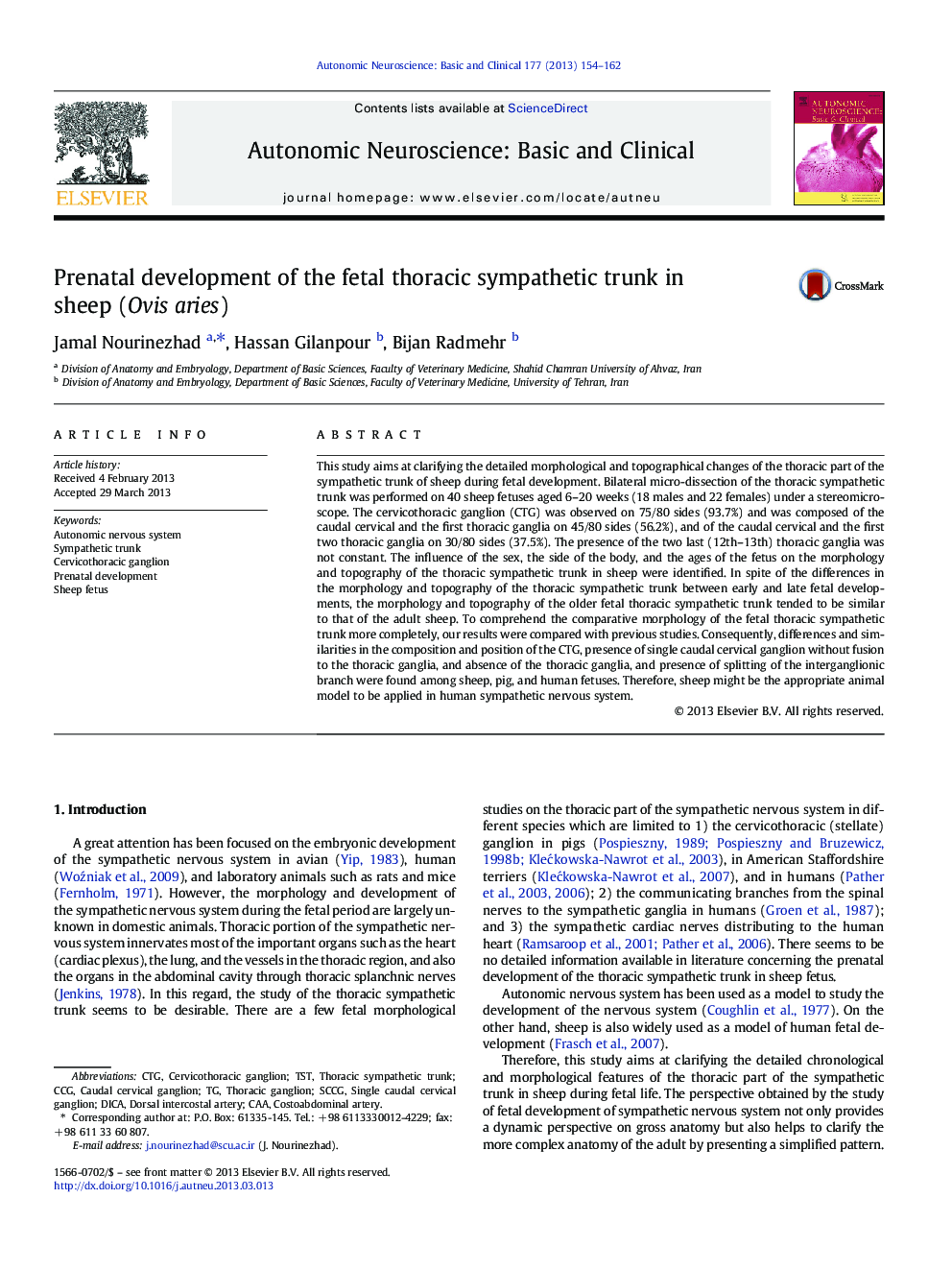| Article ID | Journal | Published Year | Pages | File Type |
|---|---|---|---|---|
| 6004214 | Autonomic Neuroscience | 2013 | 9 Pages |
This study aims at clarifying the detailed morphological and topographical changes of the thoracic part of the sympathetic trunk of sheep during fetal development. Bilateral micro-dissection of the thoracic sympathetic trunk was performed on 40 sheep fetuses aged 6-20Â weeks (18 males and 22 females) under a stereomicroscope. The cervicothoracic ganglion (CTG) was observed on 75/80 sides (93.7%) and was composed of the caudal cervical and the first thoracic ganglia on 45/80 sides (56.2%), and of the caudal cervical and the first two thoracic ganglia on 30/80 sides (37.5%). The presence of the two last (12th-13th) thoracic ganglia was not constant. The influence of the sex, the side of the body, and the ages of the fetus on the morphology and topography of the thoracic sympathetic trunk in sheep were identified. In spite of the differences in the morphology and topography of the thoracic sympathetic trunk between early and late fetal developments, the morphology and topography of the older fetal thoracic sympathetic trunk tended to be similar to that of the adult sheep. To comprehend the comparative morphology of the fetal thoracic sympathetic trunk more completely, our results were compared with previous studies. Consequently, differences and similarities in the composition and position of the CTG, presence of single caudal cervical ganglion without fusion to the thoracic ganglia, and absence of the thoracic ganglia, and presence of splitting of the interganglionic branch were found among sheep, pig, and human fetuses. Therefore, sheep might be the appropriate animal model to be applied in human sympathetic nervous system.
